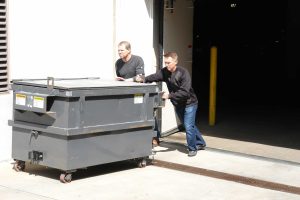
Have you ever thought about how many activities in your workplace involve pushing and pulling? They can range from minor actions like opening and closing doors to labor-intensive jobs such as moving boxes, pallets and equipment.
Here’s what the Canadian Centre for Occupational Health and Safety (CCOHS) has to say about the safety risk of pushing and pulling.
Dangers of Pushing and Pulling
The full extent of pushing and pulling injuries is difficult to quantify. Overexertion is the most predominant cause, resulting in a variety of musculoskeletal injuries ranging from muscle strain to sprained joints.
In addition to overexertion injuries, a number of ailments are an indirect result of pushing and pulling. For example, an employee could slip and fall or get hands and feet caught on or between objects.
How Can You Reduce Injury Risk?
It’s just as tough to determine specific guidelines for the amount of force that can be safely exerted when pushing or pulling. These activities involve several complex factors that make it hard to calculate standard answers.
CCOHS points out three elements that add risk to any pushing and pulling actions:
- Having hands above shoulder level or below waist level
- Exerting force for more than five seconds
- Exerting force at an angle
Protect Employees with a Dumpster Pusher from DJ Products
Whether your company is located in Canada or the United States, it faces the same set of safety challenges. Our popular WasteCaddyLite dumpster pusher reduces the risk involved in moving one of the heaviest objects in your workplace.
We welcome inquiries from throughout the United States and Canada. Call 800.686.2651 for more information.


